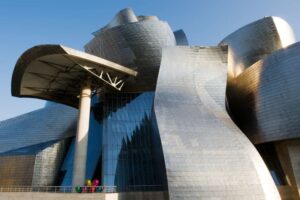
DPA
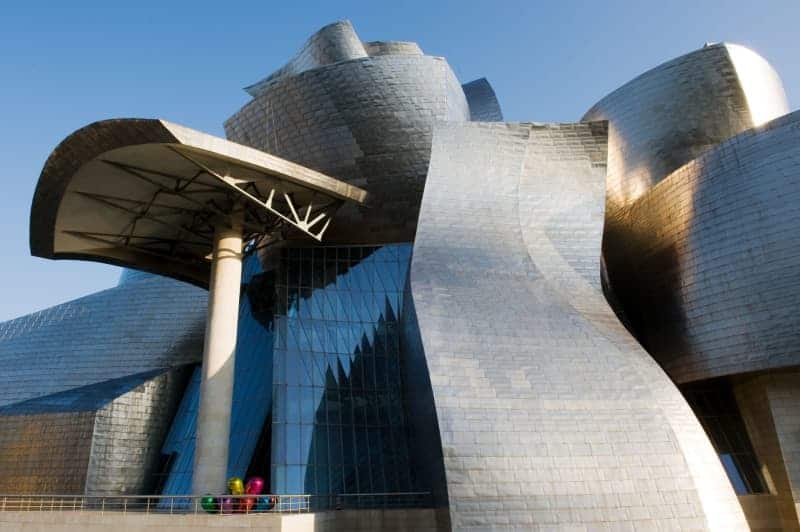
The sun’s brilliance, which is caught on the titanium plate coverings, is reflected in gold and silver. The structures fan out imaginatively towards the sky. “The metallic flower” is what some call it. Or is it more reminiscent of a ship that has docked on the banks of the Nervión?
The Guggenheim Museum of modern and contemporary Art plunges the visitor into a frenzy of starchitecture. Frank Gehry designed his avant-garde masterpiece for an invitational competition that marked the start of Bilbao’s extensive urban redevelopment. After four years of construction, the museum celebrated its opening in October 1997. On it 25th birthday, it remains the pride and joy, and landmark, of the old industrial metropolis.
The building provided the initial impetus for tourism and brought about Bilbao’s transformation from a rough-and-grey image to an international visitor destination. The “Bilbao effect” has become a term for “cultural investment plus spectacular architecture, which is supposed to equal economic uplift for cities down on their luck.”
From Lyon to Oslo
“Gehry’s building put Bilbao on the map of culture vulture tourists in one fell swoop because it spread around the world as an iconic image – similar to the Sydney Opera House. The name Guggenheim also carried a lot of weight,” says Falk Jaeger, a Berlin-based architecture professor and critic.
Many cities have long tried “to take advantage of the Bilbao effect with standout buildings by star architects, mostly museums, from Reykjavik to Graz, from Manchester to Valencia,” says Jaeger, who comes to the conclusion: “That rarely succeeds, or it fails miserably, as in the case of Lyon, where the Musée des Confluences by the architects Coop Himmelb(l)au is encamped on the banks of the Rhôn and is one thing, and one thing only: ugly.”
On the other hand, Jaeger highlights the Norwegian capital Oslo as a continuously developing positive example: “Oslo was able to record a Bilbao effect with its opera house in 2008 (Snøhetta Architects), continuing in 2020 with the Deichmann Library (Lund Hagem Arkitekter), in 2021 with the spectacular Munch Museum (Estudio Herreros) and in 2022 with the National Museum (Schuwerk and Kleihues), with which Oslo’s harbourside became a string of impressive cultural buildings.”
Sobering results
It made sense that other cities in northern Spain wanted to build on the Bilbao effect simply because of their geographical proximity – with sometimes sobering results. In Oviedo, the intended upgrading by Santiago Calatrava’s luminous Congress Palace has sunk into darkness. The industrial city of Avilés, which adorned itself with a cultural centre designed by the Brazilian architect Oscar Niemeyer, did not end up on the cultural map.
But the futuristic architecture was and is too lifeless, the neighborhood of smoking chimneys too ugly, the cultural programme too provincial. In Santiago de Compostela, Peter Eisenman’s City of Culture of Galicia, whose scattered constructions sit like foreign bodies on a hill on the edge of the city, disfiguring the landscape, has become a symbol of an excessive waste of money. Even the locals hardly want to go there, unless students and researchers need to go to the library or the regional archives.
The situation is different in the port city of Santander, where the Botín Cultural Centre has been setting innovative accents since 2017 and is well received by the locals – even if only as a destination for walks along the promenade. The work of the Italian architect Renzo Piano, who was supported by Spanish architect Luis Vidal, is modelled on a two-part breakwater, with one half on land and the other half suspended over the water on stilts.
An art museum as art
If you’re travelling to the Guggenheim in Bilbao, you should beware of misconceptions of it being an art mecca. The museum shows only a few permanent exhibits, including a “Bouquet of Carnations” by Jeff Koons on the terrace next to the water gardens and Richard Serra’s steel sculptures. At the same time, there are usually two or three temporary exhibitions of varying quality, which can be disappointing at times.
Over the past 25 years, motorbikes, vintage cars and antique porcelain from China have been on display under the guise of art, alonside fantastic shows of works such as those by David Hockney.
Architecture critic Jaeger takes issue with the fact that “the radiant building has shortcomings in the details and does not function well as a museum”. He considers the Serra gallery disproportionately “monstrous”, the pathways “strange”, and construction details “cruel to look at.” The expert may see this differently from most people, because basically it’s neither about minor details nor about what temporary exhibitions are on at any given moment.
The most important thing is the overall effect. Gehry deliberately achieved the feat of elevating an art museum itself to the status of the most important exhibit: a mega-sculpture of angular and dynamically curved forms, symmetries and asymmetries, interlacings of limestone, glass and titanium. To this day, we can all bow deeply to this achievement.
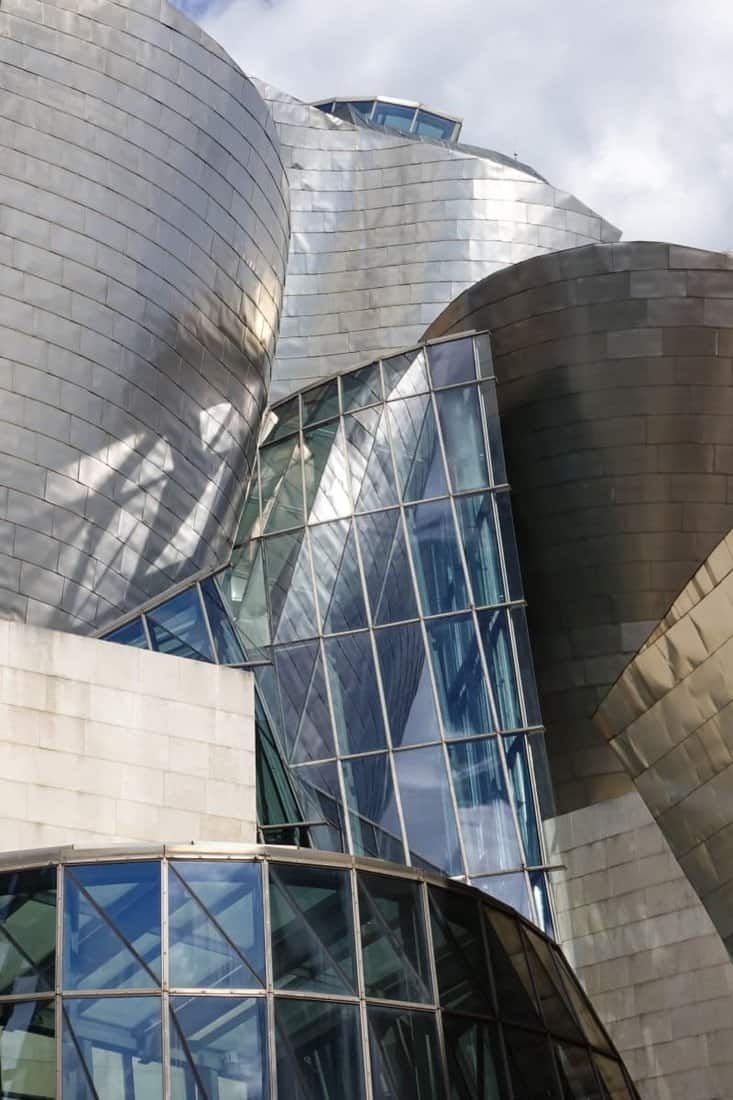
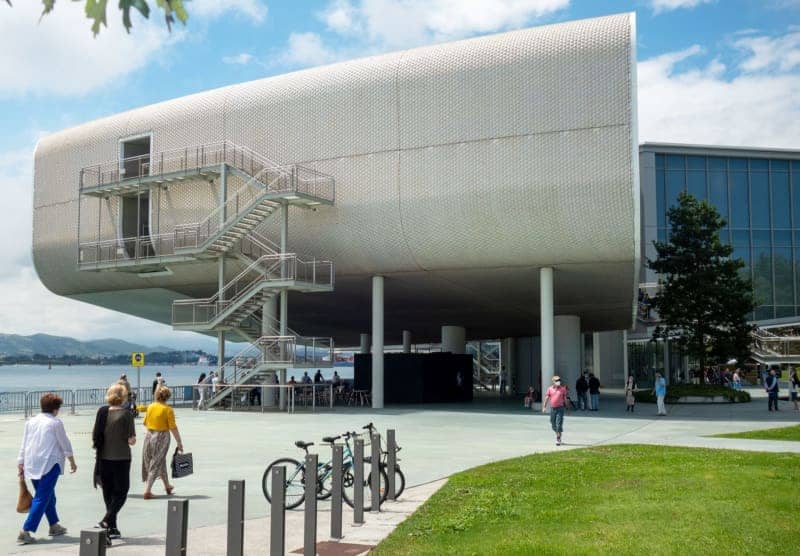
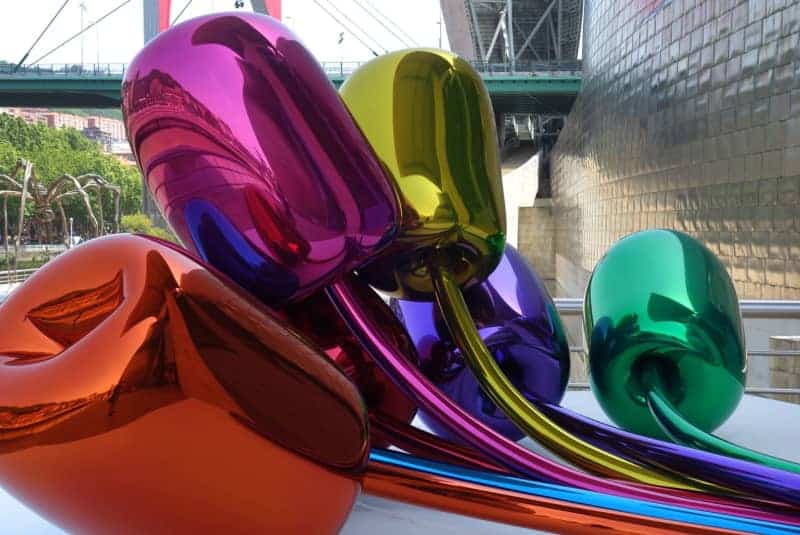
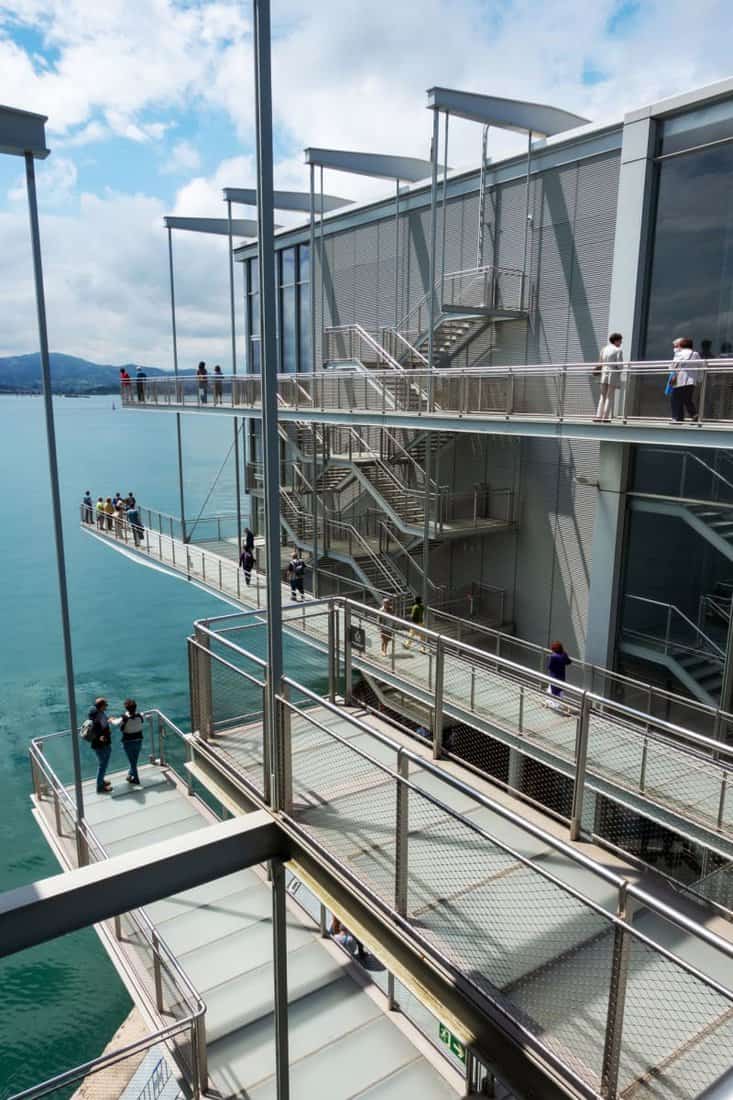
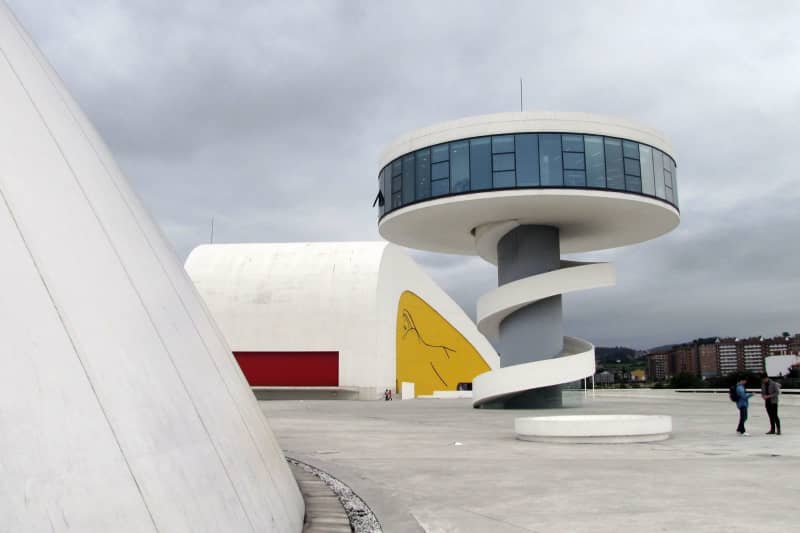
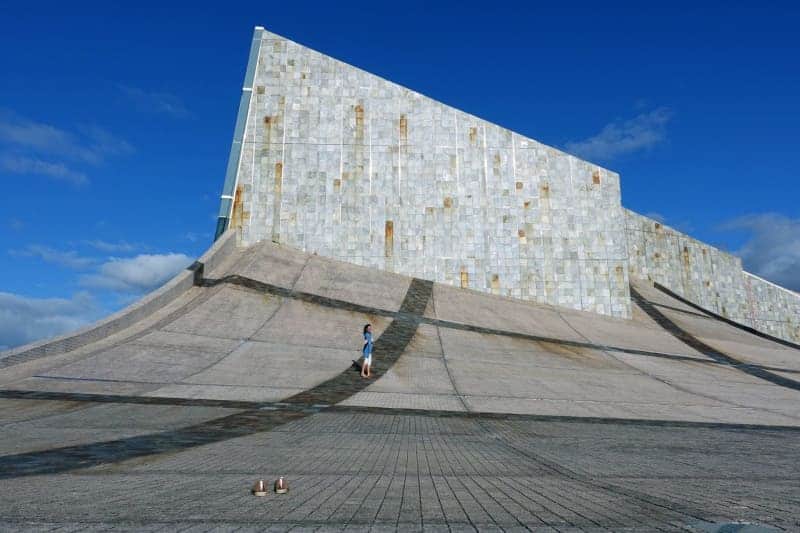
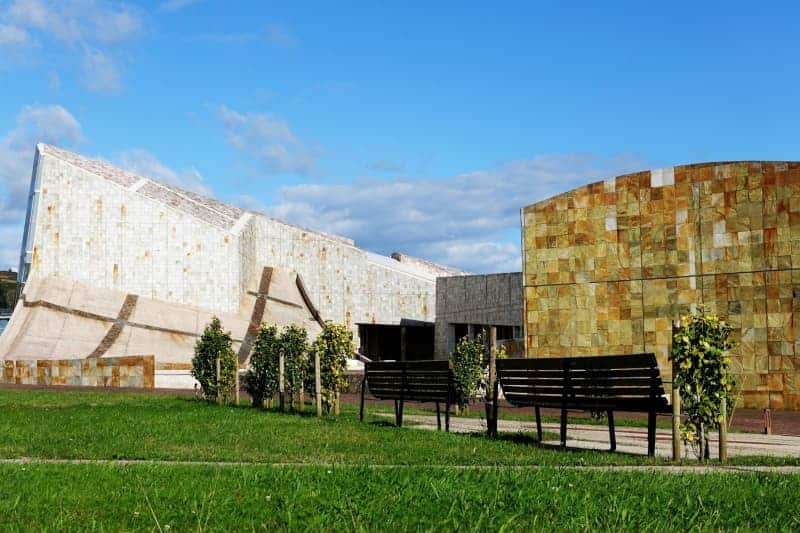
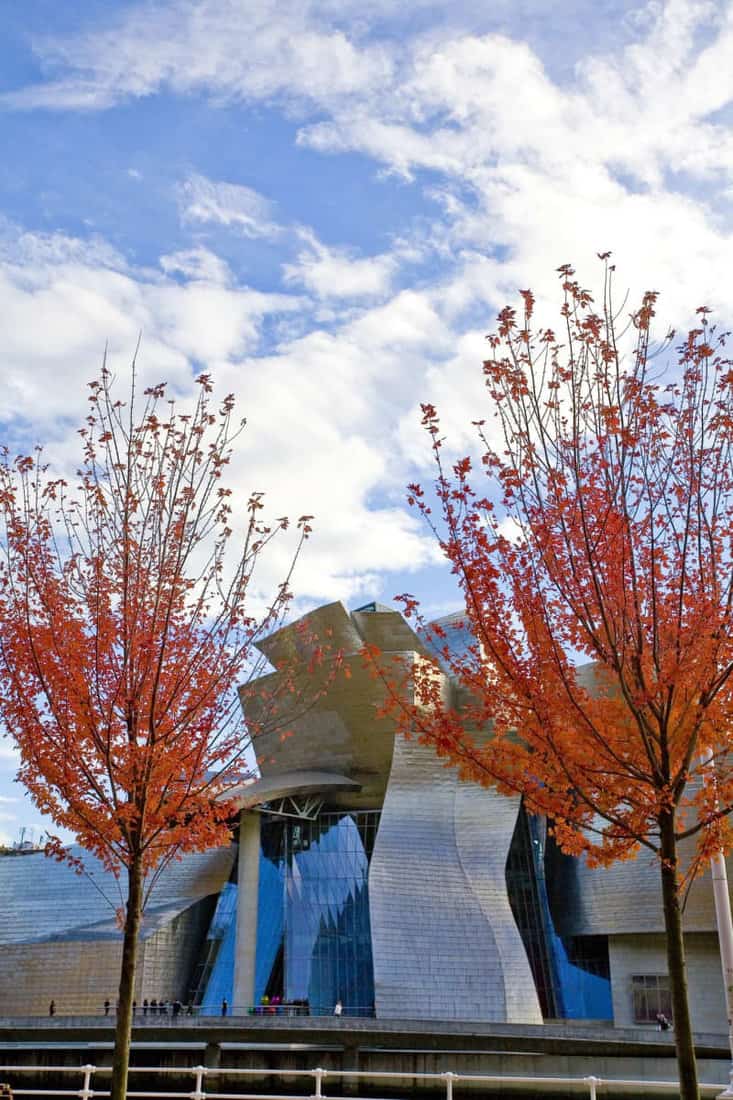


Recommended Comments
There are no comments to display.